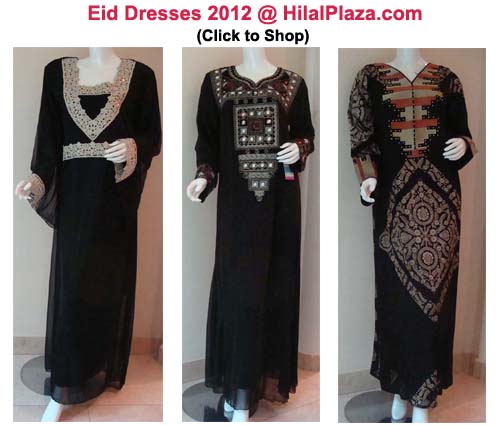Understanding Women Hijab, Abaya for woman and other Islamic and Muslim Clothing
Muslims follow the religion of Islam. As part of their religion they believe Allah to be their Creator, God and sustainer. Allah revealed the Quran (Islamic religion’s holy and noble book) and in it Allah has provided the commandments to all human beings to believe in only one creator (Allah), provided the guidance to live ones life, the concept of life and death, punishment and rewards after death in the next life, and many other such commandments.
Since the creation of the heavens and the earth, Allah has revealed his message to prophets and messengers. Some of the prophets included Jesus (son of Mary), Jacob, Joseph and Muhammad. Allah revealed his message on his prophets and messengers in the form of scriptures and holy books. These books include Bible, Torah and the Quran. Overtime, Allah’s message was changed by the people for various reasons. Allah sent Muhammad (saws) as the last prophet and revealed his last book, the Quran (also referred to as Koran) on Muhammad. The Quran has remained unchanged since its revelation more than 1500 years ago as Allah has promised that it would be free from any human changes until the day of judgment.
The foundations regarding Islamic Clothing are mentioned in the Quran and through Prophet Muhammad’s (saws) teachings and practices. The primary purpose of Islamic Clothing is to cover a man and a woman’s body as prescribed by Islamic law. This article briefly delineates the various forms of Islamic Clothing worn by Muslims across the world.
The common Islamic teachings require women to cover all their bodies with the exception of the front part of the face and hands (from the wrist area to the fingers). All other areas are required to be covered.
Understanding the concept of “Islamic clothing” also requires an understanding of the term mahram and non-mahram. Although Muslim men and women are required to dress modestly at all times, a Muslim women is usually not subject to the same Islamic teachings in front of mahram men. Mahram men include husbands, brothers, fathers, fathers-in-law, sons and certain other close relationships. Everyone else not permitted in Islamic religion fall under the category of non-mahram.
Abaya
Abaya are robes like dresses that Muslim women wear on top of regular clothing. The primary purpose of wearing an abaya is to completely cover oneself so as not to expose any bodily attributes or beauty as Islam instructs women to guard their beauty from all men except those who are specifically allowed.
Head abaya
Certain religious interpretations require a women to dress in clothing that should not expose any body formations whatsoever. In such cases, Muslim women wear abaya dresses that rest on top of their heads and extend below the ankles. This ensures that a women’s body formations stay hidden from men who are not lawful to a woman.
Black abaya
Black abaya are more commonly worn in black in most middle eastern countries, especially those in the Guf region. These countries include Saudi-Arabia, Kuwait, Qatar and other neighboring countries.
White abaya
These abayas are populary worn in Far Eastern muslim countries.
Colored abaya
As abaya are popularly worn among Muslim women, abaya designers have created new abaya fashions and have designed embroidered and colored abaya. These abaya are popularly worn in Jordan, western countries and are also now being worn in Middle Eastern countries.
Abaya dresses come in many types of fabrics. However, Rayon/Polyester material is the most common fabric used in their manufacture. Other fabrics used include cotton, chiffone and georgette.
Jilbab
The word Jilbab refers to “something that covers”. Jilbab are often used synonymously with Abayas. However, new clothing trends set Jilbab apart from Abaya dresses. Jilbabs are more fashionable and western looking long coat like dresses that cover the body. Most women weart Jilbab over regular clothing.
Hijab
Hijab is a headcover that Muslim women usually wear to cover their hair and head. The word Hijab is a derivative of the Arabic word “hajaba” that means “to conceal”. Certain Islamic interpretations refer to Hijab as covering the face as well as the head. The most common interpretation refers to covering the head and the hair.
The requirements for covering the hair is in the most common and accepted Islamic teachings that requires Muslim women not to show any bodily hair to men whom they are not related to in certain relations. For example, Muslim women do not have to cover their head and thus can show their hair to their fathers, husbands, sons, fathers and other men who are specifically allowed as “mahram” (legal). For all others that are not specified in the Islamic teachings, the Muslim women are required to cover their head and head hair.
To enable Muslim women to abide by the Islamic teachings, manufacturers have designed many forms and designs of Hijab. Certain are basic scarves and shawls like fabrics that Muslim women can use to cover their hair by folding the scarves and shawls in a certain patterns. Others are sewn to better fit the head area, and to cover the hair without the hair slipping out of the Hijab. Others Hijab styles come in a pair in which one piece serves as a hijab cap that covers the hair while a shawl covers general coverage of the head area. Hijab capscan be matched with shawls of various types as well.
Hijab garments are most commonly available in cotton and polyester blend fabrics. Cotton is more commonly used in the summer as cotton is a breathable fabric and allows Muslim women to stay cool in the summer months. Polyester blend fabrics however are most commonly and widely used.
Scarves / Shawls
Scarves and Shawls are worn as Hijab to cover the head fully, the neck and the upper chest areas of the body. Scarves and shawls worn for this purpose usually have larger dimensions to provide coverage of the mentioned areas. As scarves and shawls are worn by non-Muslim women as well, Muslim women find larger selection of designs and colors and therefore use them as Hijab.
Arabic Clothing
Arabic Clothing refers to thobes and other long dresses. These are kaftan dresses or similar and in some cases resemble long maxi dresses as well. These are embroidered and mostly fully sleeve dresses.
Niqab
Niqab is a garment that enables Muslim women to cover their faces from non-mahram men. Niqab is widely used by Muslim women who believe in the Islamic teachings of covering ones face also (besides the head and hair) from non-mahram men. Figure 5 illustrates Niqab.
Long Skirts
As Muslim women are required to cover themselves from top to toe, long skirts are popular among Muslim women. These popular skirts extend all the way upto the ankles to provide full coverage of the legs.
Long Muslim skirts are commonly found in western markets and, therefore, are less challenging to find and wear for Muslim women.
Long Blouses
As mentioned earlier, one of the primary requirements of dressing up in front of non-mahram men is that Muslim women dress modestly and not reveal their bodies in the nude or by wearing tight clothing that reveals body shapes and contours. As wearing trousers sometimes makes it challenging to meet that requirement, Muslim women prefer wearing long tops, kurta, and blouses to cover the hip and waist area.
Additional Sources
Modesty in Muslim Women’s Clothing from An Islamic Viewpoint
Islamic Fashion and Media Debates
Buy Women Islamic Clothing
Muslim Women Clothing - A Choice









